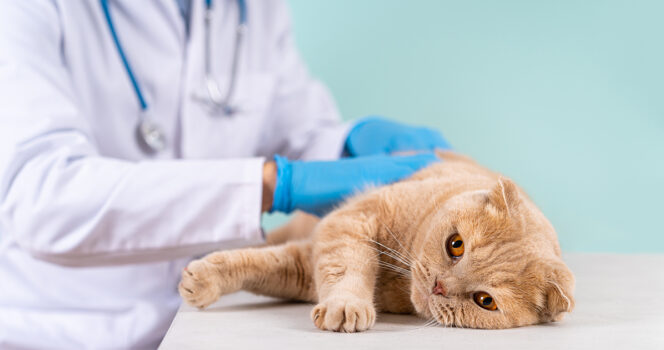Cats are more than animals we care for—they’re woven into the fabric of our lives. From curling up beside us on quiet evenings to greeting us with soft purrs after long days, they hold a sacred space in our hearts. And yet, no matter how deeply we wish they could stay with us forever, there comes a moment when we must face the most difficult part of loving them: letting go.
Seeing your feline companion age or fall ill is an emotional journey, often filled with uncertainty. Cats, by nature, are experts at masking discomfort—so much so that by the time we notice something is wrong, their decline may already be underway.
By learning to recognize the subtle and not-so-subtle signs that your cat is nearing the end of its life, you can help ensure that its final days are filled with compassion, calm, and closeness. Here are some of the key indicators to watch for and gentle steps you can take to provide comfort in their final chapter.
1. A Tendency to Withdraw
Cats have a long history of self-reliance. Even in sickness, their instinct is to retreat. In the wild, staying hidden keeps them safe—and even in our homes, that behavior remains. If your cat suddenly begins hiding more often, slipping away to quiet corners, under beds, or behind furniture, it may be their natural response to feeling vulnerable or unwell.
2. Decline in Appetite and Hydration
A cat that’s no longer eating or drinking the way it once did might be signaling that its body is preparing to shut down. Though it’s painful to witness, a drop in appetite and thirst is one of the clearest signs that the end may be near. Try offering favorite treats or gently moistening food, but know that sometimes, simply being present is all you can do.
3. Longer, More Frequent Periods of Rest
While cats love their naps, you might notice your cat sleeping more deeply and for longer stretches than usual. Energy fades, and movement becomes less frequent. What once was a playful dash through the living room may turn into quiet moments curled up in a favorite spot.
4. Irregular Breathing
Changes in breathing can be an unsettling but important signal. Some cats begin to breathe more rapidly, while others take shallow or uneven breaths. These shifts are often a result of weakening internal systems and should be taken seriously.
5. Emotional and Social Withdrawal
A once-affectionate and sociable cat may become distant. You might call their name and receive only a faint flick of the ear, or notice they no longer respond to your presence the way they used to. This emotional distancing can be heartbreaking, but it’s often just their way of conserving energy or managing discomfort.
6. Changes in Their Coat
When cats begin to stop grooming themselves, you may notice their fur looking unkempt—perhaps matted, dull, or coarser than usual. Grooming takes effort, and if your cat no longer has the strength or will, the condition of their coat may quickly decline.
7. Difficulty with Movement
Whether it’s hesitating before a jump or stumbling when walking, problems with coordination and balance can suggest a cat’s physical strength is fading. Mobility issues can also make it hard for them to reach food, water, or the litter box, so creating accessible, close-by setups is helpful.
8. Shifts in Attachment and Behavior
While some cats seek solitude, others may draw closer in their final days. You might find them curling up on your chest more often or following you from room to room, seeking closeness and comfort. This sudden neediness is their way of saying, “Please stay with me.”
9. Digestive Upsets
Digestive distress, including vomiting or nausea, is another common symptom. Some cats might drool excessively, avoid food entirely, or display signs of discomfort after eating. Offering bland, easily digestible food and ensuring they stay clean and dry can go a long way toward easing their discomfort.
10. Constipation or Diarrhea
The digestive system often becomes unstable as the body shuts down. Whether your cat experiences constipation or diarrhea, the key is to keep them comfortable. Ensure easy access to the litter box and keep their environment as stress-free and clean as possible.
11. Fluctuations in Body Temperature
Changes in body temperature—feeling unusually cold to the touch or experiencing random fevers—can indicate organ failure or severe illness. If you suspect your cat’s temperature is too high or low, contacting a vet can help you determine the best course of action.
A Gentle Goodbye
There’s no easy way to watch a beloved cat fade. But you can make this time meaningful by creating a space of peace and security for them. Soft bedding, quiet surroundings, and the familiar sound of your voice can bring great comfort in these moments.
And if you’re unsure whether your cat is in pain or how to ease their discomfort, don’t hesitate to reach out to your veterinarian. They can help you understand what your pet is going through and guide you in choosing the most compassionate path forward—whether that means continued care or a peaceful goodbye through humane euthanasia.
In the end, your presence, your love, and your comfort are the greatest gifts you can offer. Being there for your cat, especially during this sacred final chapter, is a testament to the bond you’ve shared—and a beautiful way to say, “Thank you. I love you. You can rest now.”
